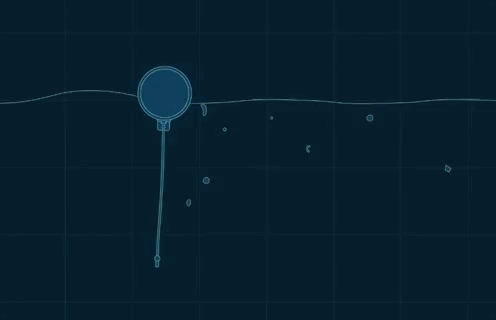Boyan Slat
Boyan Slat, born in 1994 in the Netherlands, has devoted his time and energy to investigating how to clean up plastic pollution in the oceans since he was 16. He quit his Aerospace Engineering studies at TU Delft University to be able to work full-time on bringing his ideas to life. In 2013 he founded The Ocean Cleanup, a foundation that develops technologies to extract plastic pollution from the oceans and prevent more plastic debris from entering them. According to their website their system is estimated to clean up 50 % of the Great Pacific Garbage Patch in 5 years.
"For our work in the deep ocean to succeed in the long run, it’s crucial that governments and other organizations speed up their efforts to mitigate the sources of the problem we aim to resolve."
Boyan Slat is the youngest-ever recipient of the Champion of the Earth, the UN’s highest environmental honor that celebrates outstanding figures from the public and private sectors and from civil society whose actions have had a transformative positive impact on the environment. Slat has received several other awards and in 2016 he was included in the Forbes 30 under 30 edition.
Slat learned that cleaning up the plastics floating in the ocean could take nearly 80,000 years because they are constantly moving with currents. So, he invented a system that uses these movements as an advantage. This system, driven by the ocean currents, will concentrate the plastic, reducing the theoretical cleanup time significantly. With a barrier in the water the swirling plastic could be collected much more quickly and then it could be pulled out of the water and recycled. The first cleanup prototype was tested in June 2016, and the non-profit now prepares to launch the first full-scale operational system into the Great Pacific Garbage Patch on September 8 2018. After the local “tow test,” the engineers will bring the first section back, and connect the rest to form a total of the 2,000 feet of piping.
The barrier is a giant floater made of a durable plastic (HDPE) that sits at the surface of the water. It is flexible enough to bend with the waves, but rigid enough to form a U-shaped barrier to stop the plastic floating on the ocean’s surface. A strong nylon screen, attached underneath, will catch some of plastic below the surface, but because it isn’t a net, won’t catch marine life. Large anchors, floating hundreds of feet below the surface, will help steady the device so it moves in the current more slowly than the plastic, making it possible to scoop up the plastic that’s collected in front of the device. The floating systems are designed to capture plastics ranging from small pieces just millimeters in size, up to large debris, including massive discarded fishing nets (ghost nets), which can can be tens of meters wide.
The Ocean Cleanup has raised USD2,2 million in a crowdfunding campaign, and other investors, including Salesforce CEO Marc Benioff, brought in millions more to fund research and development. In total Slat has raised USD31,5 million, most of which donated. It expects to bring back 5,000 kilograms of plastic per month, with the first batch coming in by the end of 2018, and it believes that it can collect half of the plastic floating in the Great Pacific Garbage Patch (which contains an estimated 40,000 metric tons of trash) within 5 years. All this collected plastic will be sold to manufacturers, who can use it to make new products.
Critics of Slat´s system have doubts if the system will work and they say that most plastic trash sinks and can only be found deeper in the oceans. But Slat´s research proves otherwise: "The idea that plastics break down very quickly is not correct according to our research. It can continue to float for decades. We have found large pieces of plastic from the eighties floating around. When you read the studies, you see that the pieces that are found on the seabed are mainly polymers such as polyester, that are plastics that by definition do not float. We think that only a small fraction in the ocean reaches the deep sea." Others are afraid that the systems will harm marine life and still other think that these systems should be deployed at places where trash enters the oceans, at the end of waterways. That wouldn't solve the problem of the plastic that is already floating in the oceans though. And it is a huge problem that needs to be addressed now. “Most of [the plastic] is still large, which means that in the next few decades if we don’t get it out, the amount of microplastics can be tenfold or 100-fold. It’s this problem that’s waiting out there to magnify many times unless we can take it out”, says Slat.
Collecting trash is of course only part of the solution to the problem of plastic waste. The inflow of waste is so enormous that a solution needs to be found in the way we make, use, and reuse plastics. “Cleanups play an essential role in dealing with the symptoms of ocean plastics pollution, but they do not address the causes,” says Sander Defruyt, New Plastics Economy lead for the Ellen MacArthur Foundation, an organization that works on helping create closed-loop systems for plastic. This change of mindset will require innovators, industry, and governments to collaborate and develop solutions that prevent plastic from becoming waste in the first place. The organization has convinced several major brands and retailers to commit to 100% reusable, recyclable, or compostable packaging, and promotes solutions like compostable, marine-degradable plastic made from food and agricultural waste by the startup Full Cycle Bioplastics.
Sources
Further info
The Ocean Cleanup Youtube Channel

